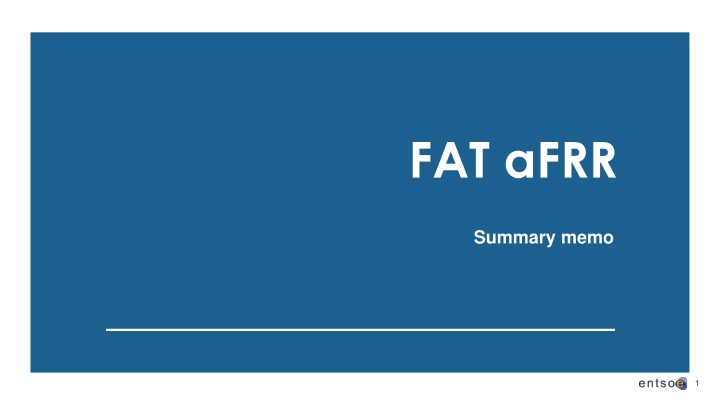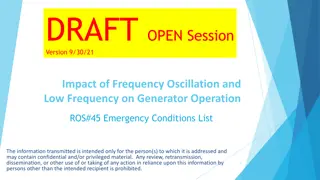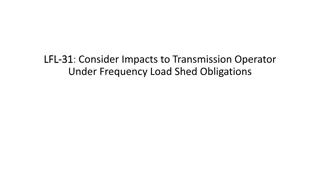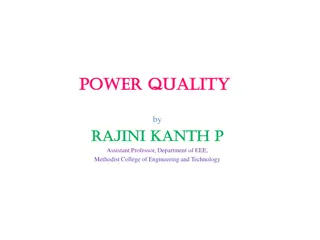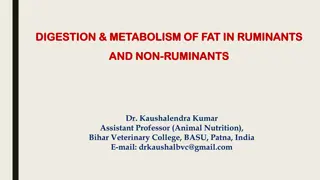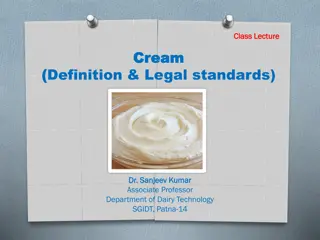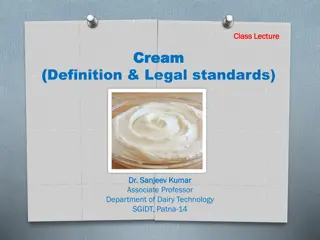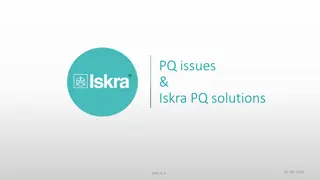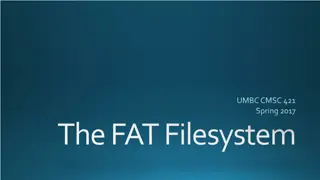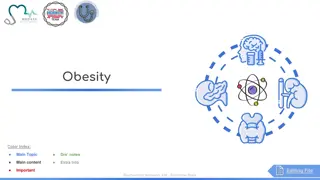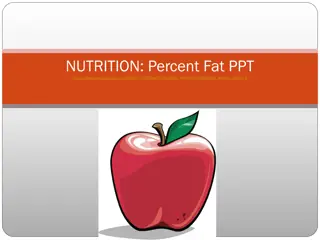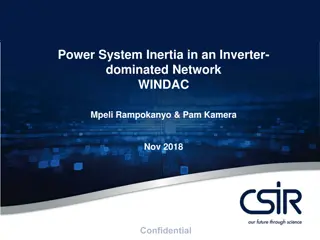Analysis of FAT.aFRR Impact on Power System Frequency Quality in Europe
The FAT.aFRR study examines the impact of values ranging from 2 to 15 minutes on the Frequency Restoration Capability Enhancements (FRCE) quality in Europe. It assesses the direct effect on frequency quality for small synchronous areas and the competition and procurement costs related to thermal unit volume offered by Balancing Service Providers (BSPs). With technical and economical assessments, the study delves into potential candidates, simulation results, risk factors, and market implications, highlighting challenges in sustaining aFRR markets and balancing capacity procurement costs. Alternative options were explored but didn't seem viable due to market complexities and implementation challenges.
Uploaded on Oct 01, 2024 | 0 Views
Download Presentation

Please find below an Image/Link to download the presentation.
The content on the website is provided AS IS for your information and personal use only. It may not be sold, licensed, or shared on other websites without obtaining consent from the author.If you encounter any issues during the download, it is possible that the publisher has removed the file from their server.
You are allowed to download the files provided on this website for personal or commercial use, subject to the condition that they are used lawfully. All files are the property of their respective owners.
The content on the website is provided AS IS for your information and personal use only. It may not be sold, licensed, or shared on other websites without obtaining consent from the author.
E N D
Presentation Transcript
FAT aFRR Summary memo 1
Context Currently, values from 2 to 15 min in Europe Direct impact on the FRCE quality, with direct links to the frequency quality for small synchronous area Direct impact on the volume offered from thermal units by BSPs, hence on competition and procurement costs Potential candidates: 5 min and 7.5 min 2
Technical assessment Technical simulations run on a limited number of countries Austria, Belgium, France, Germany and the Netherlands proxy for the other countries Different assumptions for FAT Analysis of the impact of the individual FRCE quality target for each LFC block, and on the impact of the overall FRCE quality of the region, considered as a proxy for the frequency quality at synchronous area level Risk of not being compliant with frequency quality indicators for Continental Europe Many assumptions of course: how will the market develop? What will be the pattern of imbalances in the future? But we are heading to a more volatile world compare to what we know nowadays FIGURE 6: SIMULATEDYEARLYMINUTESOUTSIDETHESTANDARD FREQUENCYRANGEOF CONTINENTAL EUROPE 3
Economical assessment Effect on the procurement costs for balancing capacity have been analysed for France and Belgium France: expected increase of procurement costs of 26 MEUR/year (+54%) Mostly driven by impact on opportunity costs Belgium: expected increase of procurement of 8 to 20 MEUR/year, depending on assumptions on Clean Spark Spread Mostly driven by must-run costs of out-of-money units Belgium (Elia) 7,5 minutes France (RTE) 6,7 minutes (400 seconds) [500 MW 1200 MW] (dynamic band) ( 660 MW on average) Nuclear, coal, gas, DSM, hydro Current FAT Dimensioned aFRR volume 140 MW Gas units (CCGT) Type of aFRR providers Table 1: French and Belgian aFRR markets Neither 5 min or 7.5 min is considered as a good sustainable solution 4
Alternative options 7 differents options were discussed, involving Specific products next to 1 standard product 2 Standard products Ramping constraints in the algorithm Considering: Procurement costs Technical needs Compliancy with EBGL Market impact Implementation impact and lead time for implementation None was seen as a good solution, for different reasons, among which: Split of the market High implementation complexity for specific products, leading to the risk that it remains a long term solution Not merit order activation 5
Proposed approach aFRR FAT of 5 min is seen as a need for the system in the future More volatility arising from renewables and HVDC interconnections Fast products will help limiting other measures that may limit the welfare in other timeframes (ramping constraints for instance) New entrants typically are able to offer fast flexibility without increased costs This 5-min would have a too big impact as of now, or as of go-live of the platform Need for the market to develop, and to let new entrants participating, attracted by an integrated market, and a merit-order activations Delay the harmonisation of the FAT during 4 years Impact on the level-playing field (hence harmonisation), but limited when it comes to balancing energy (mainly for non-contracted bids) No need to implement specific products has of go-live, which could have led to a situation where the specific products would have continued to be accepted 6
